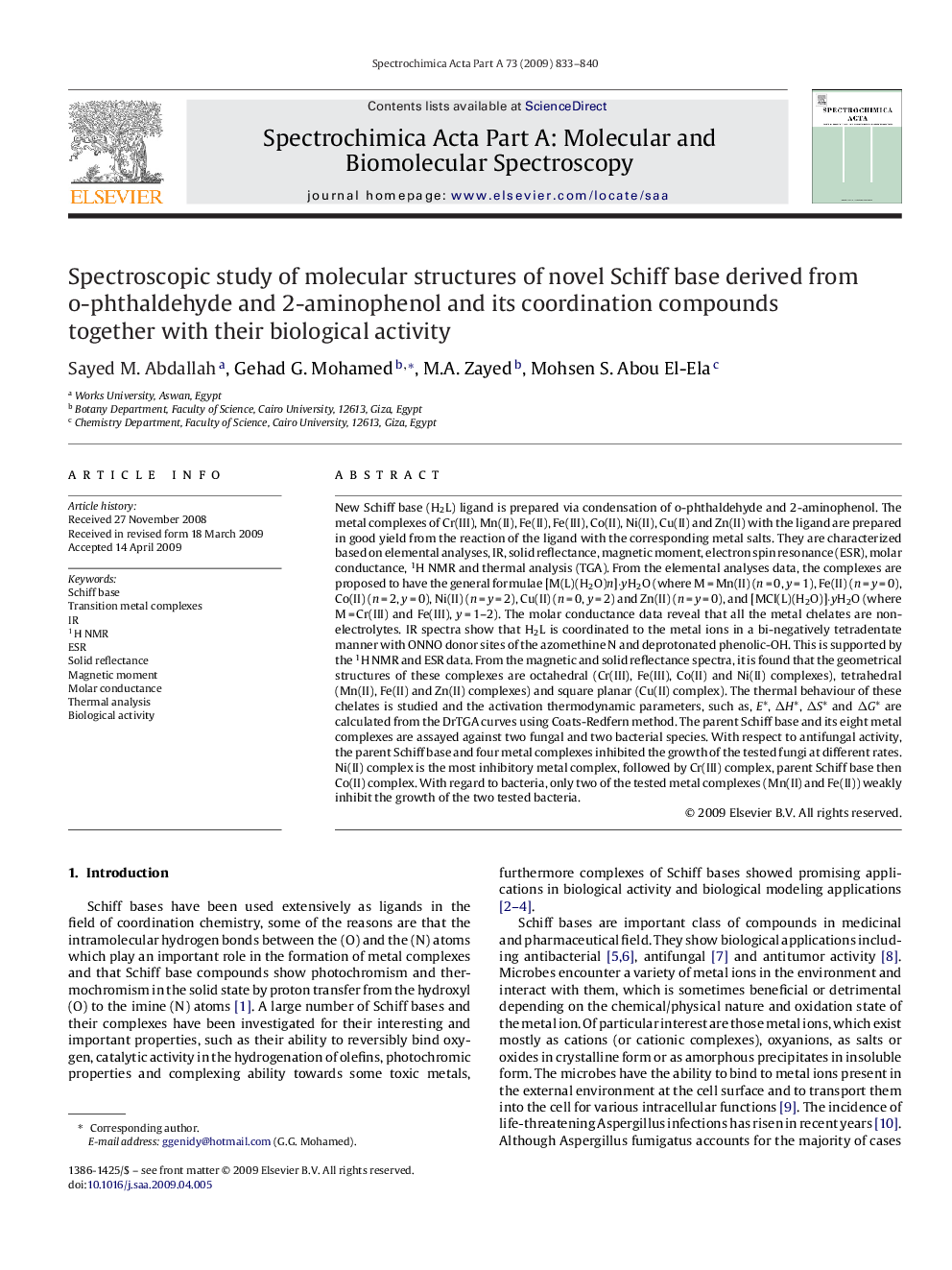| کد مقاله | کد نشریه | سال انتشار | مقاله انگلیسی | نسخه تمام متن |
|---|---|---|---|---|
| 1233050 | 968802 | 2009 | 8 صفحه PDF | دانلود رایگان |

New Schiff base (H2L) ligand is prepared via condensation of o-phthaldehyde and 2-aminophenol. The metal complexes of Cr(III), Mn(II), Fe(II), Fe(III), Co(II), Ni(II), Cu(II) and Zn(II) with the ligand are prepared in good yield from the reaction of the ligand with the corresponding metal salts. They are characterized based on elemental analyses, IR, solid reflectance, magnetic moment, electron spin resonance (ESR), molar conductance, 1H NMR and thermal analysis (TGA). From the elemental analyses data, the complexes are proposed to have the general formulae [M(L)(H2O)n]·yH2O (where M = Mn(II) (n = 0, y = 1), Fe(II) (n = y = 0), Co(II) (n = 2, y = 0), Ni(II) (n = y = 2), Cu(II) (n = 0, y = 2) and Zn(II) (n = y = 0), and [MCl(L)(H2O)]·yH2O (where M = Cr(III) and Fe(III), y = 1–2). The molar conductance data reveal that all the metal chelates are non-electrolytes. IR spectra show that H2L is coordinated to the metal ions in a bi-negatively tetradentate manner with ONNO donor sites of the azomethine N and deprotonated phenolic-OH. This is supported by the 1H NMR and ESR data. From the magnetic and solid reflectance spectra, it is found that the geometrical structures of these complexes are octahedral (Cr(III), Fe(III), Co(II) and Ni(II) complexes), tetrahedral (Mn(II), Fe(II) and Zn(II) complexes) and square planar (Cu(II) complex). The thermal behaviour of these chelates is studied and the activation thermodynamic parameters, such as, E*, ΔH*, ΔS* and ΔG* are calculated from the DrTGA curves using Coats-Redfern method. The parent Schiff base and its eight metal complexes are assayed against two fungal and two bacterial species. With respect to antifungal activity, the parent Schiff base and four metal complexes inhibited the growth of the tested fungi at different rates. Ni(II) complex is the most inhibitory metal complex, followed by Cr(III) complex, parent Schiff base then Co(II) complex. With regard to bacteria, only two of the tested metal complexes (Mn(II) and Fe(II)) weakly inhibit the growth of the two tested bacteria.
Journal: Spectrochimica Acta Part A: Molecular and Biomolecular Spectroscopy - Volume 73, Issue 5, 1 September 2009, Pages 833–840